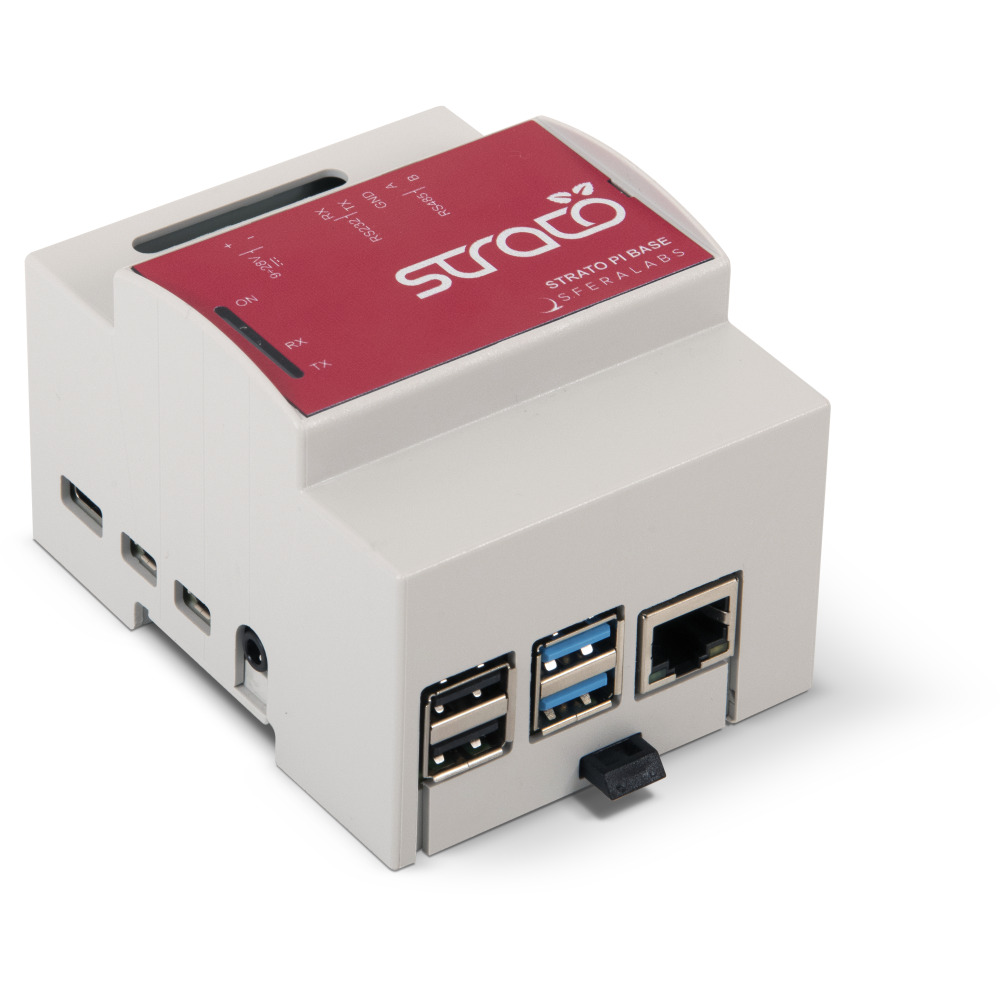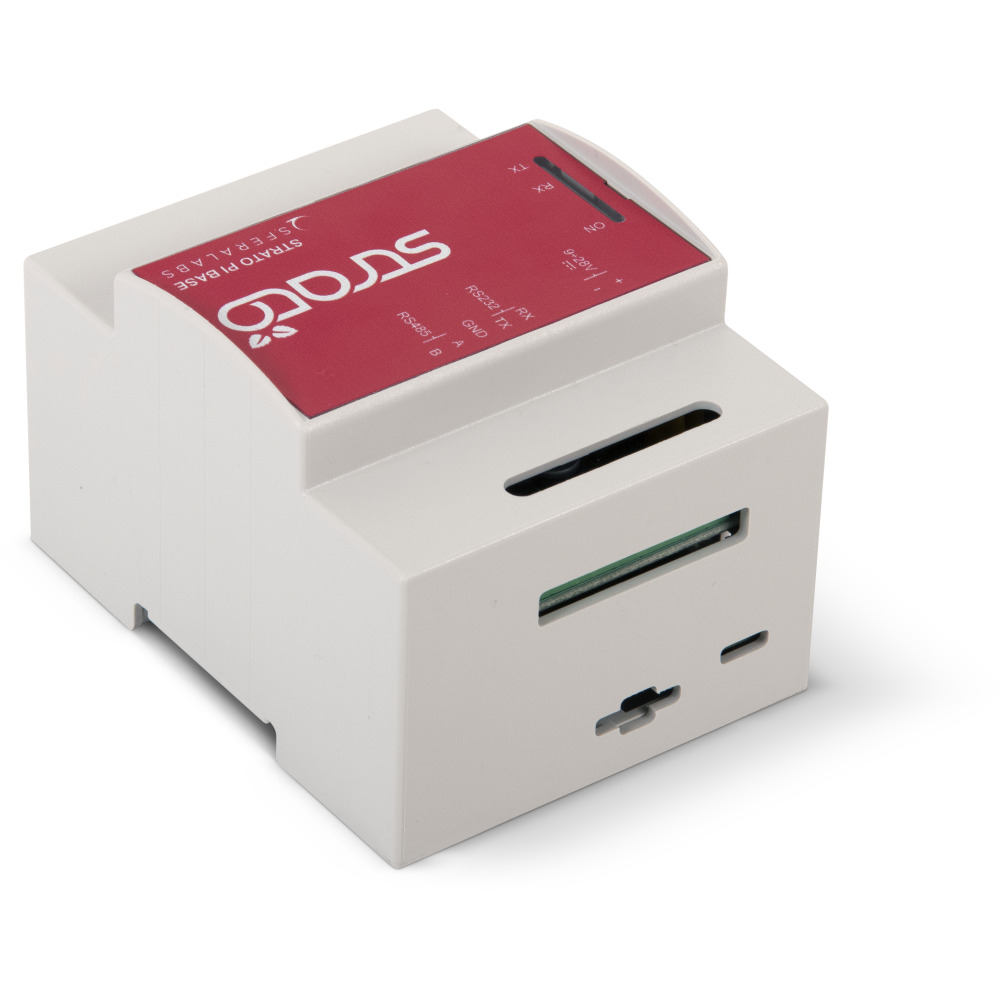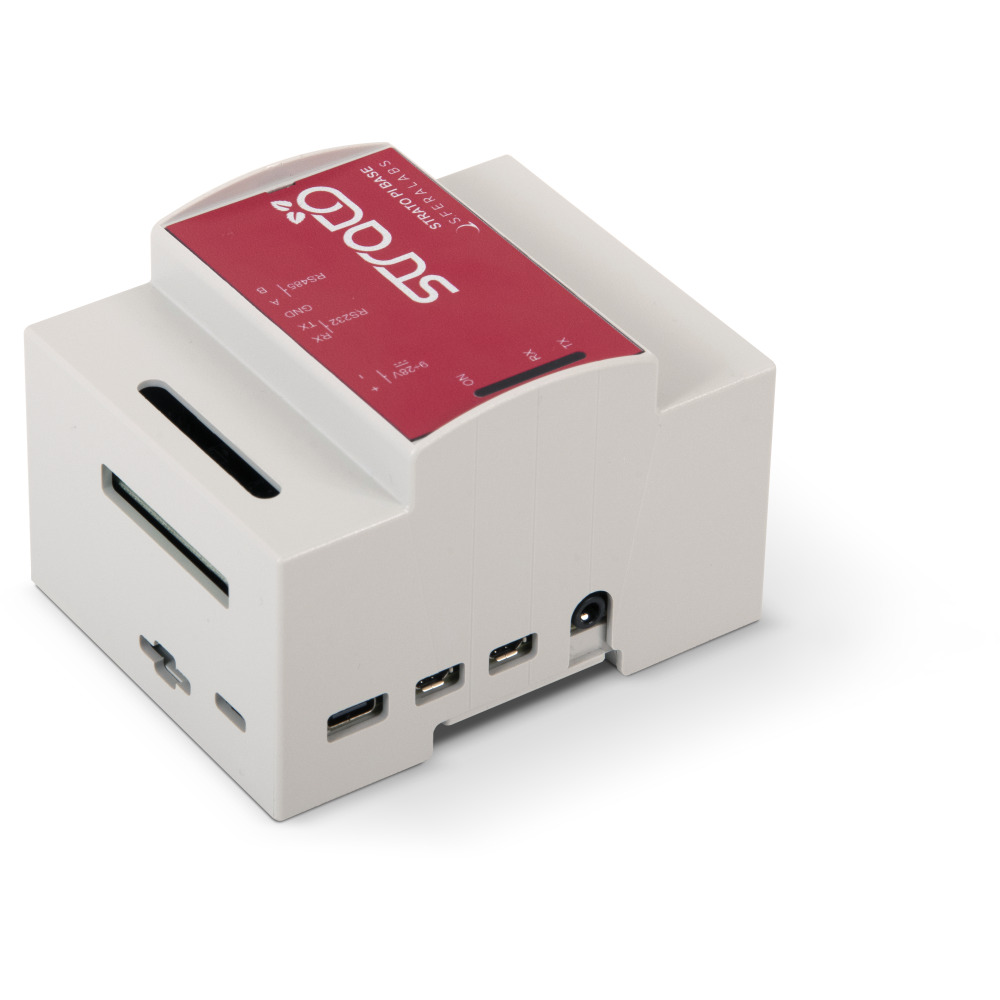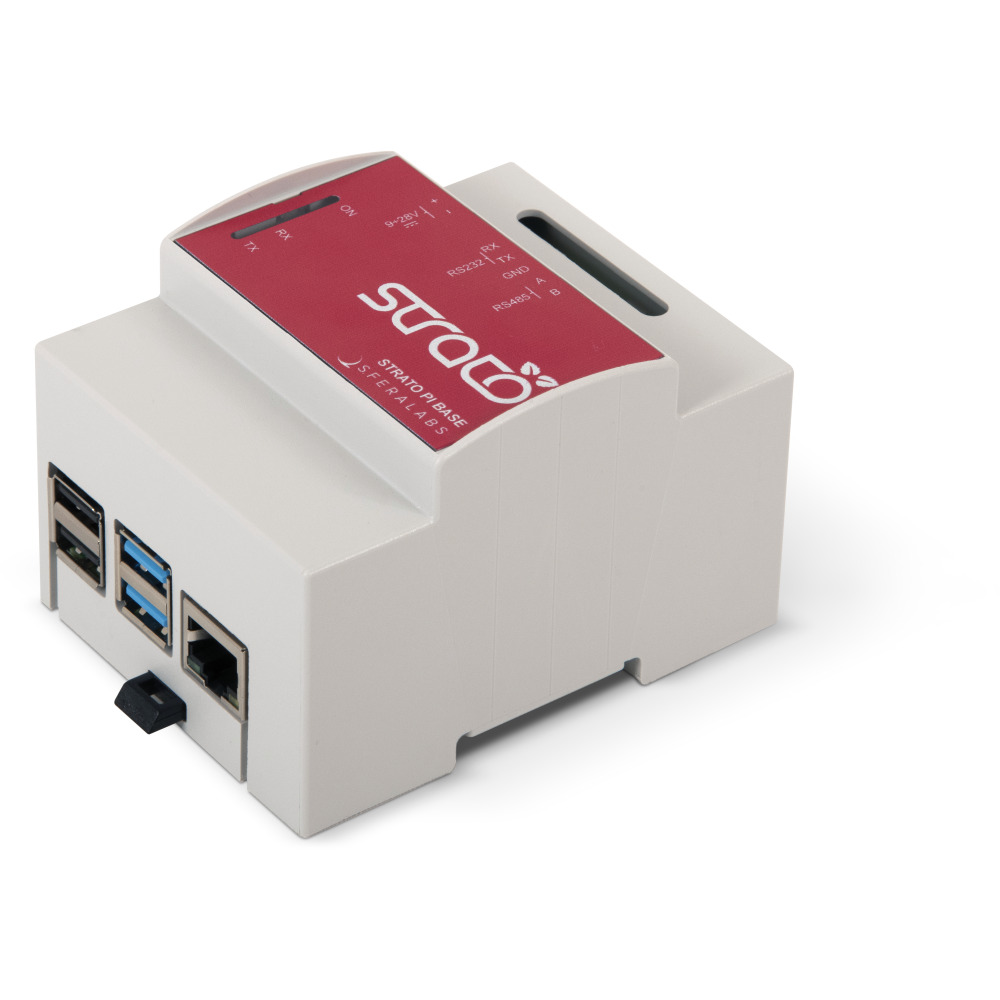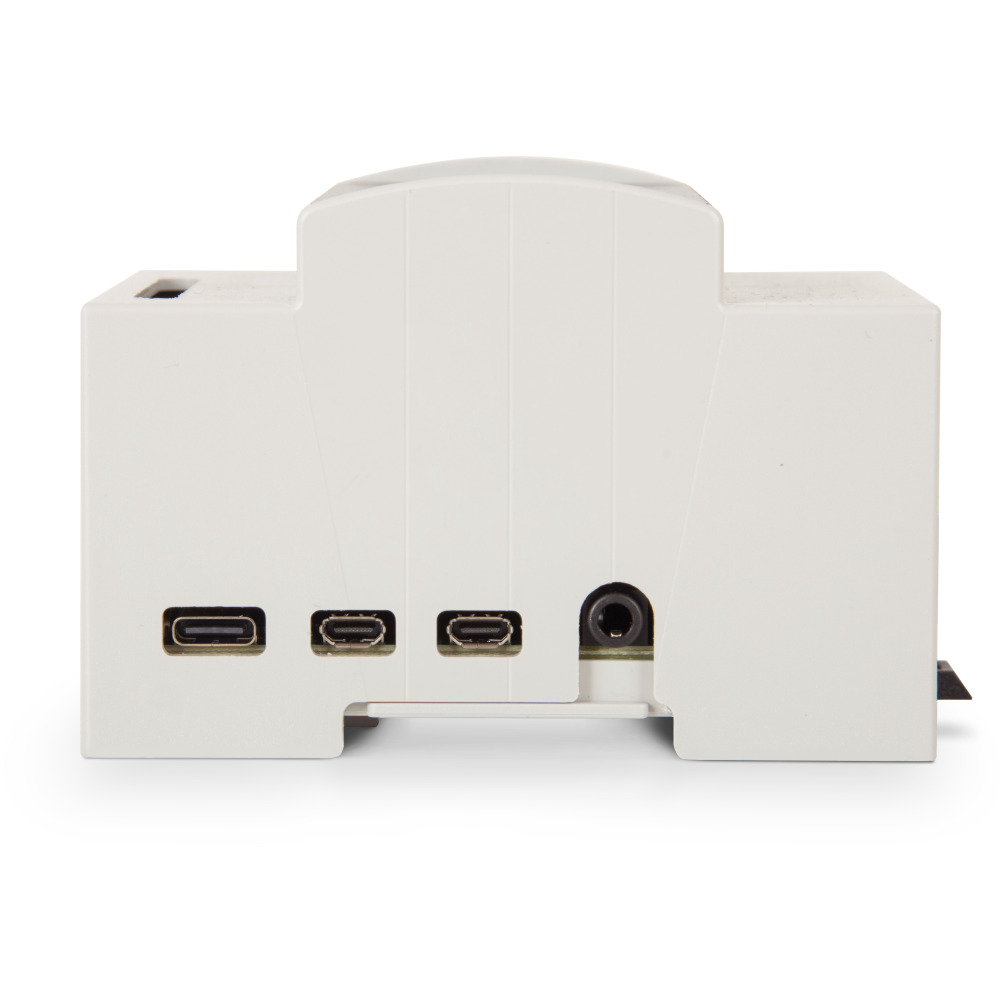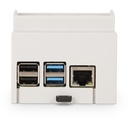Strato Pi Base
Servidor industrial Raspberry Pi diseñado para una comunicación fiable y un funcionamiento seguro en entornos profesionales.
Incluye:
✅Interfaces RS232 y RS485
✅Fuente de alimentación de amplio rango
✅Reloj en tiempo real
✅Watchdog de hardware
✅Elemento criptográfico seguro
Cumple con: CE, FCC, IC
DESCRIPCIÓN
Raspberry Pi industrial
Strato Pi Base mejora el ordenador Raspberry Pi con varias características de hardware para que sea adecuado para su uso en aplicaciones industriales y profesionales, donde la fiabilidad y la continuidad del servicio son requisitos fundamentales.
Cumple con las directivas CE sobre baja tensión y compatibilidad electromagnética, así como con las normas armonizadas sobre compatibilidad electromagnética, seguridad eléctrica, emisiones y la directiva RoHS sobre sustancias peligrosas. También cumple con las normas FCC y los estándares IC aplicables.
CARACTERÍSTICAS
Montaje y carcasa
Diseñada para instalaciones industriales, esta unidad está alojada en una carcasa compacta de 4 módulos que se puede montar en un raíl DIN. Ofrece un cómodo acceso a las interfaces de alimentación y serie a través de un bloque de terminales de tornillo fiable.
Fuente de alimentación
Diseñada para funcionar en condiciones exigentes, la etapa de potencia admite un amplio rango de entrada de 9 a 28 V CC y cuenta con robustos mecanismos de protección:
- Protección contra sobretensiones y polaridad inversa
- 2.2A un fusible rearmable para mayor seguridad.
- Proporciona hasta 4,0 A a la entrada de alimentación de 5 V de la Raspberry Pi a 24 V CC.
Interfaces serie
El sistema incluye puertos serie RS-232 y RS-485 estándar conectados directamente a la Raspberry Pi. Estas interfaces son:
- Opto-isolated para separación eléctrica
- Protegido contra descargas electrostáticas, lo que garantiza una comunicación de datos segura y fiable.
Seguridad y fiabilidad
Diseñada para admitir aplicaciones de misión crítica, esta unidad integra varias funciones de seguridad y protección basadas en hardware:
- Dispositivo independiente de vigilancia del hardware controlado mediante GPIO para la recuperación automática en caso de bloqueo del sistema.
- Reloj en tiempo real (RTC) con batería de respaldo reemplazable para mantener la hora exacta durante cortes de energía.
- Elemento seguro opcional Microchip ATECC608A/B para operaciones criptográficas.
- Cargador de arranque integrado que permite actualizaciones de firmware directamente desde la Raspberry Pi.
- Ventilador SPBF10X opcional para refrigeración activa con control de temperatura.
Características adicionales
Para mejorar la usabilidad y la supervisión del sistema, el dispositivo también incluye:
- Altavoz controlado a través de GPIO para alertas personalizadas o retroalimentación.
- LED que indican el estado de alimentación y la actividad de la línea serie.
Interfaces integradas Raspberry Pi
Aprovecha toda la conectividad de la plataforma Raspberry Pi, incluyendo:
- 1 × Puerto Ethernet
- 4 × puertos USB
- 1 × HDMI (Raspberry Pi 3+) or 2 × Micro HDMI (Raspberry Pi 4)
- 1 × microSD card slot
- 1 × conector de audio/vídeo compuesto
- Wi-Fi y Bluetooth/BLE integrados
DESTACADO
Fuente de alimentación
Una fuente de alimentación estable y robusta es esencial para garantizar un rendimiento fiable las 24 horas del día, los 7 días de la semana, en entornos industriales. A diferencia de los cargadores USB típicos, que están diseñados para dispositivos móviles, este sistema está construido para soportar cargas continuas, ruido, ondulaciones y fluctuaciones de voltaje.
El dispositivo admite un amplio rango de entrada de 9 a 28 V CC e incluye amplias funciones de protección:
- Convertidor de tensión reductor de alta eficiencia (~95 %) que suministra hasta 3 A de forma continua.
- Protección contra sobrecorriente, sobretensión y apagado térmico.
- Protección contra polaridad inversa mediante fusibles rearmables.
- Protección contra sobretensiones de hasta ±500 V (1,2/50 μs, 2 Ω)
La etapa de entrada de potencia incluye condensadores, inductores y diodos sobredimensionados para garantizar una durabilidad a largo plazo en condiciones adversas.
Real-Time Clock (RTC)
Para mantener la hora exacta incluso sin acceso a Internet, este controlador incluye un reloj en tiempo real con batería de respaldo. Está conectado a la Raspberry Pi a través del bus I²C y se basa en el chip Microchip MCP79410, que ofrece funciones avanzadas de reloj y calendario.
Cuando se produce un corte en el suministro eléctrico principal, el sistema cambia automáticamente a una pila de litio CR1025, lo que garantiza el funcionamiento continuo del reloj. En entornos con suministro eléctrico continuo, se espera que la pila dure más de 10 años.
Interfaces serie
Las interfaces RS-232 y RS-485 siguen siendo muy utilizadas en la automatización industrial. Este sistema incluye puertos serie totalmente aislados y protegidos, conectados directamente a la Raspberry Pi.
Para evitar fallos causados por bucles de tierra, los circuitos en serie están optoaislados mediante:
- Un convertidor CC-CC aislado de alta eficiencia.
- Tres opto acopladores de alta velocidad
Un microcontrolador integrado gestiona automáticamente la dirección de los datos RS-485 en función de la velocidad en baudios y la longitud de trama, sin necesidad de configuración adicional. La comunicación es fluida a través de los pines TX/RX estándar.
Hardware Watchdog
Los sistemas desatendidos necesitan una forma fiable de recuperarse de los fallos de software. Este dispositivo incluye un circuito watchdog de hardware totalmente independiente, controlado a través de pines GPIO.
En caso de bloqueo del sistema, el watchdog reinicia automáticamente la Raspberry Pi, lo que ayuda a restablecer el funcionamiento sin intervención del usuario. A diferencia del watchdog interno de la Raspberry Pi, esta solución se ejecuta en el propio microcontrolador del dispositivo, lo que garantiza una alta fiabilidad.
